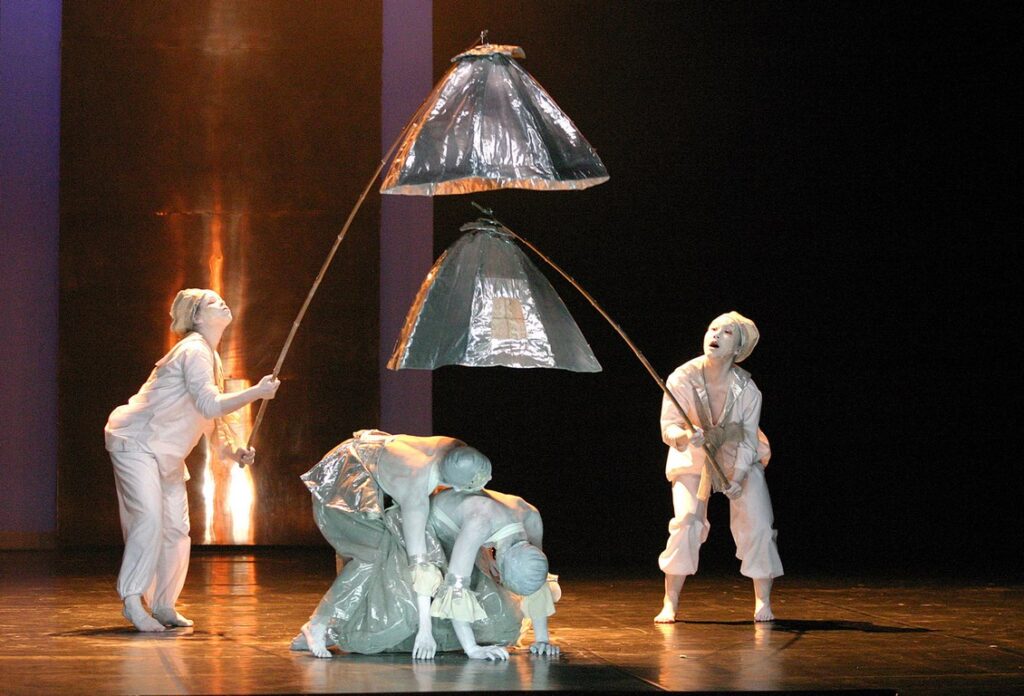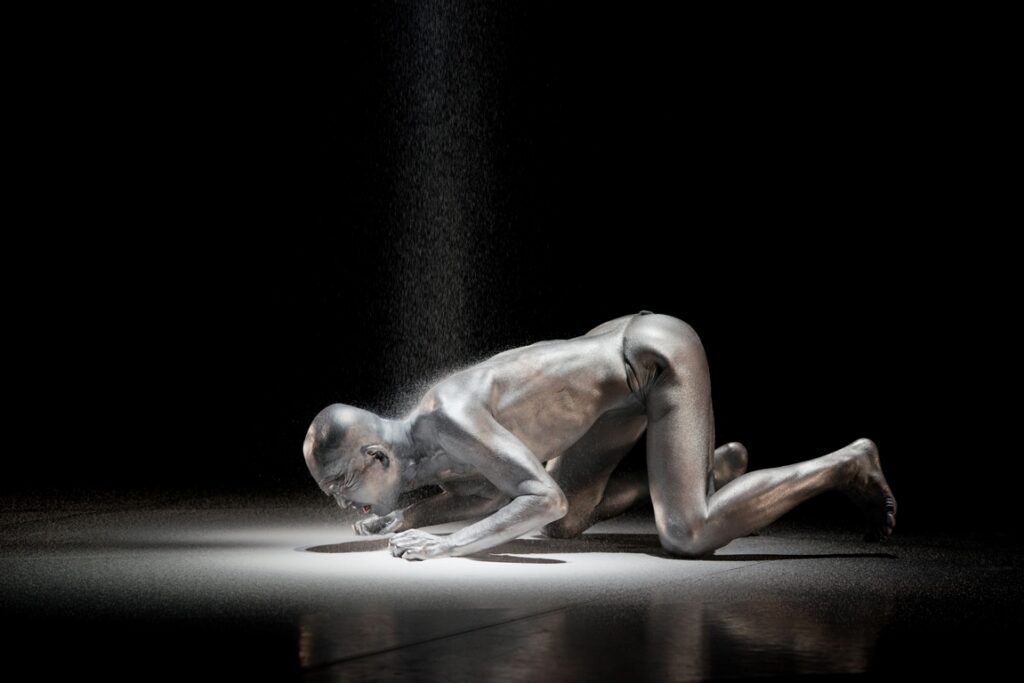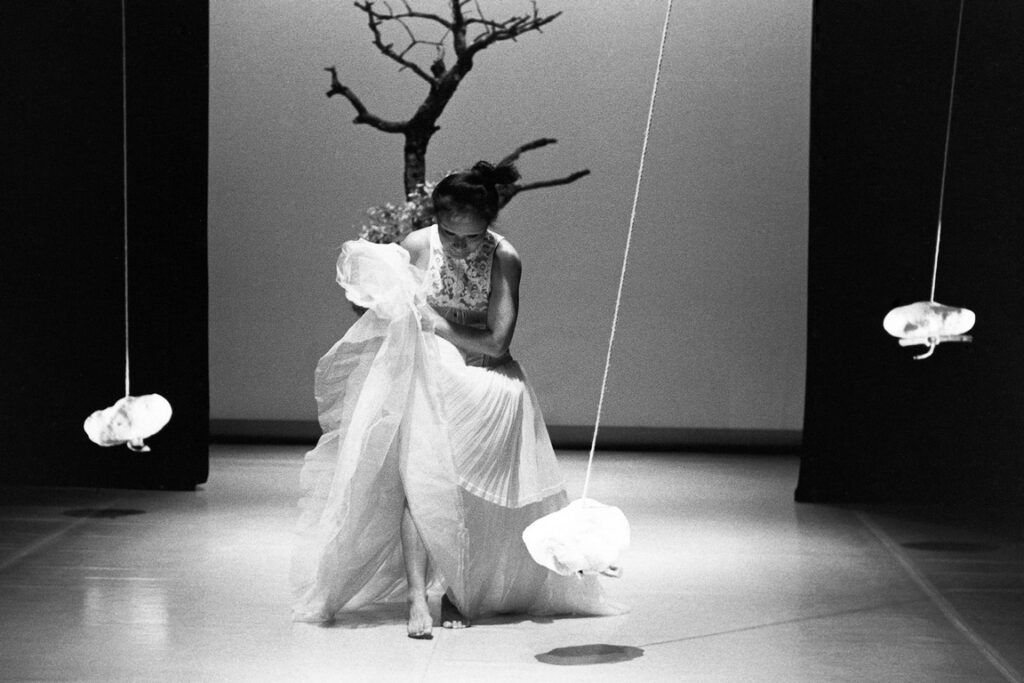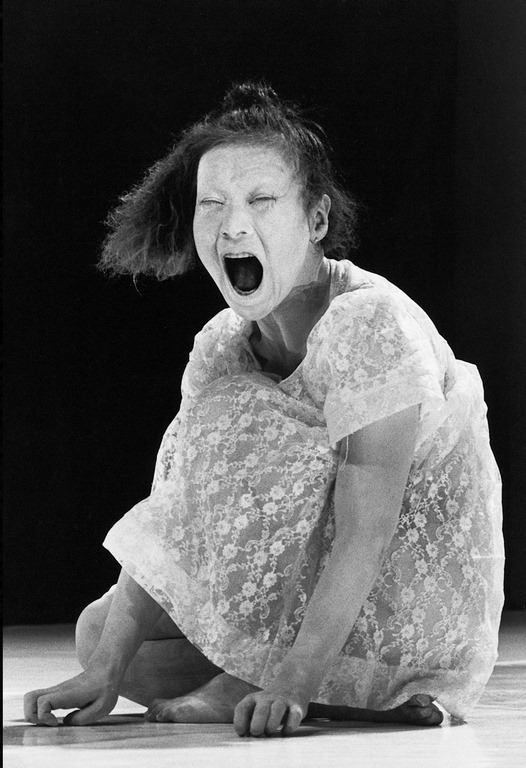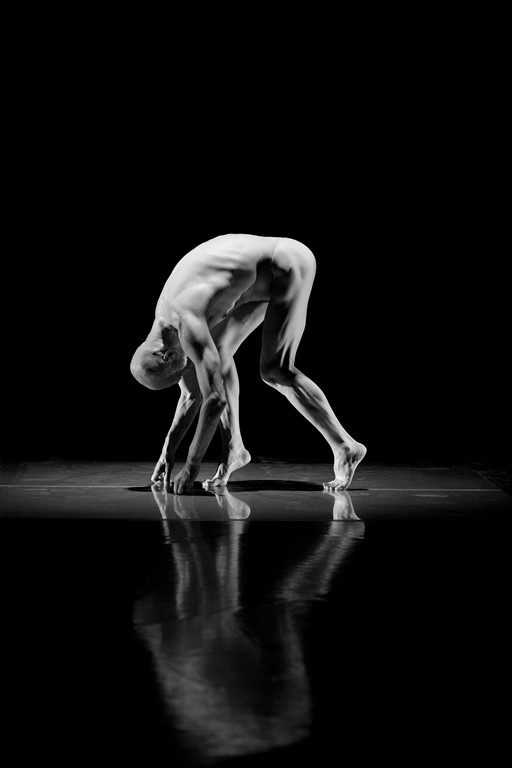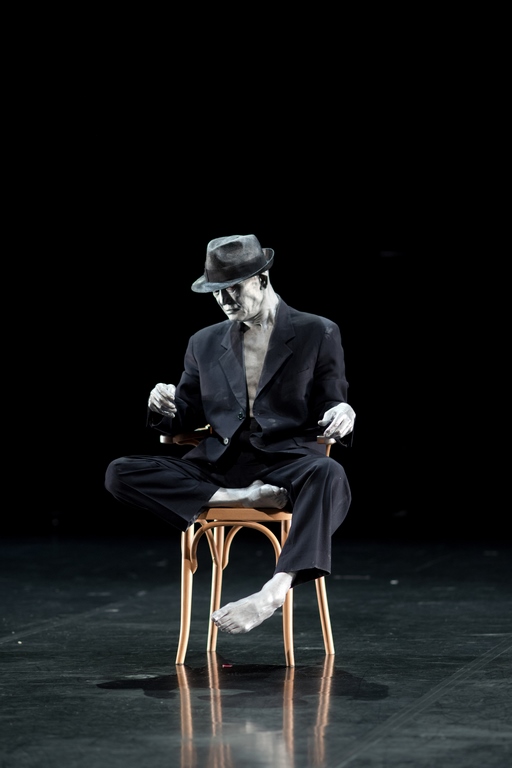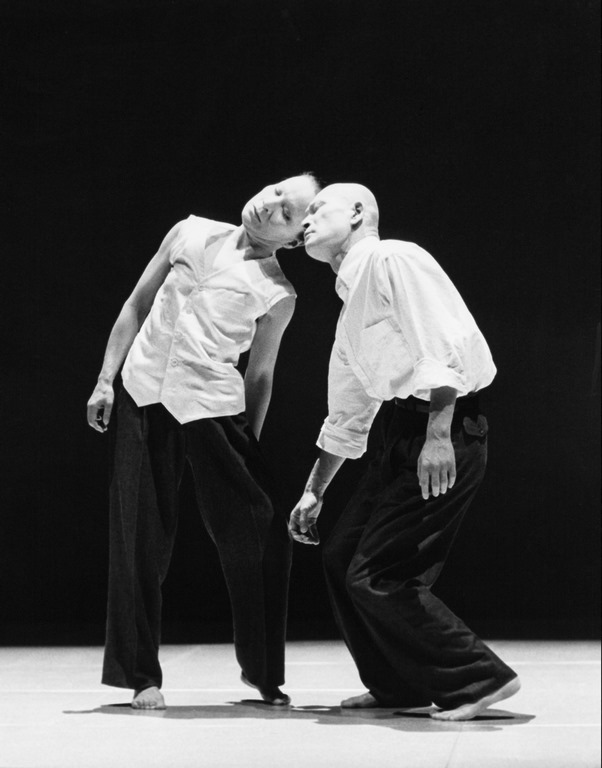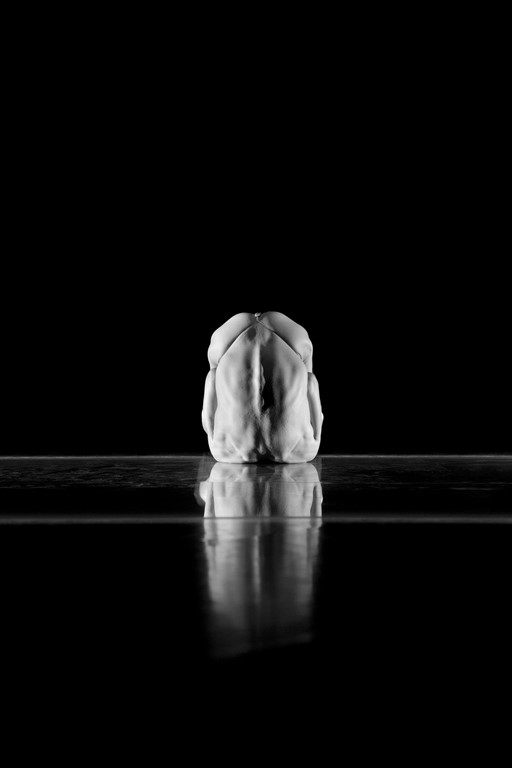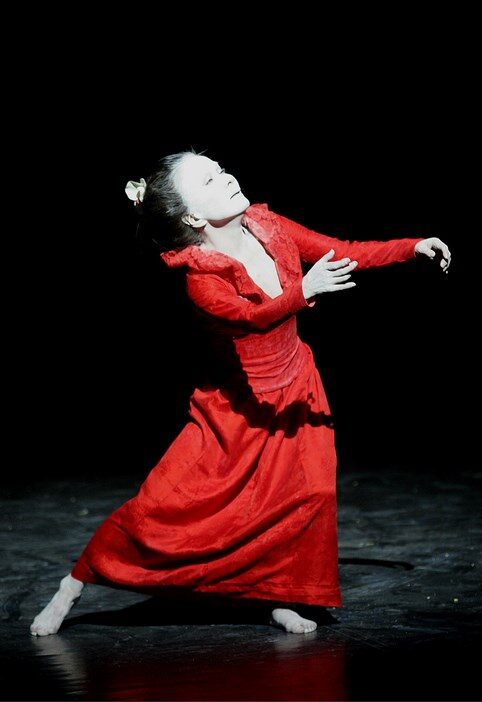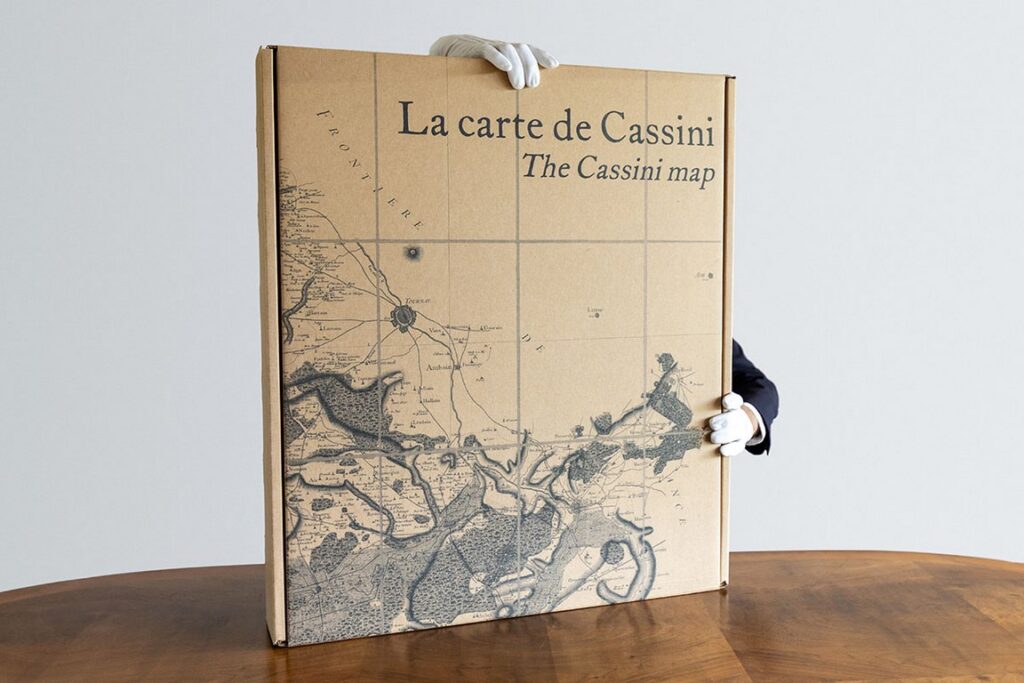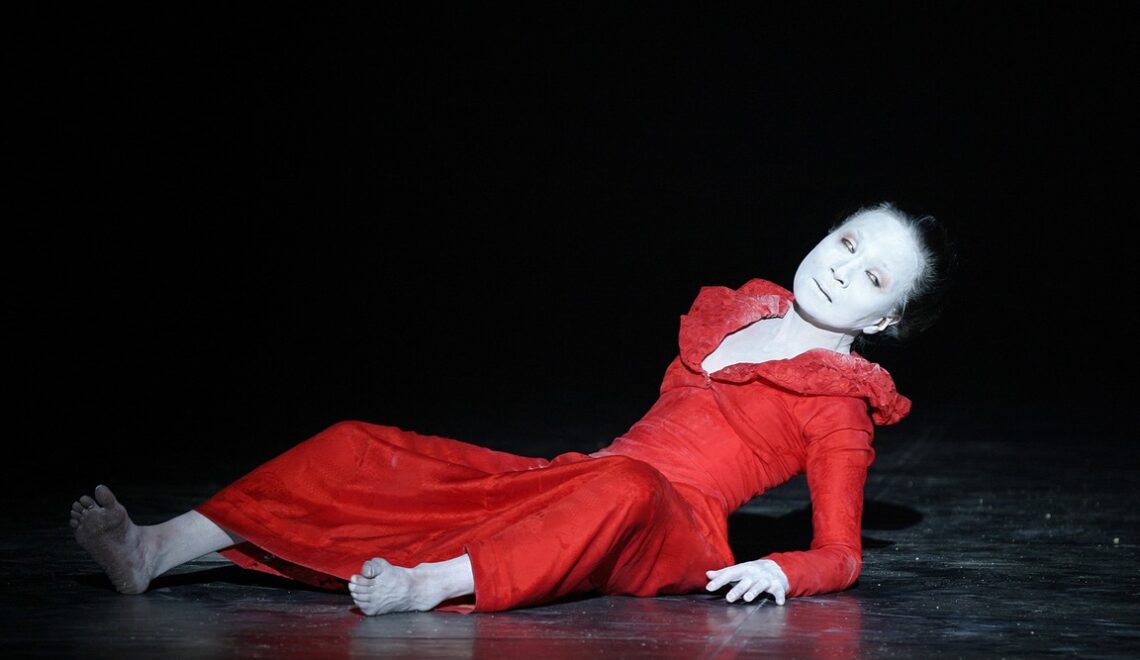
Buto is a contemporary dance form founded in the 1960s by the Japanese dancers Tatsumi Hijikata (1928-1986) and Kazuo Ono (1906-2010). Hijikata created a transcultural, transgressive and revolutionary form of expression, rejecting institutionalised artistic styles but sometimes referring to his cultural heritage. He calls his art ankoku buto or Dance of Darkness.
During this period, from the second half of the 1960s to the early 1970s, Japan was trying to recover from its first defeat in over 2000 years of history. Bruised by the tragedy of Hiroshima, society aspired to Western modernity, while at the same time being prey to confusion, the violence of student movements and the advent of the underground that permeated Tokyo's performing arts scene. It was against this backdrop of protest and artistic ferment that Hijikata invented a cosmogony that challenged the values of the modern consumerist world, creating a dance in which the body is a sacrificial body, where the taboos of death and eroticism are at the heart of this antidance (1), where "The antagonism between life and death is expressed in an intense and concentrated way", he says. His first choreographic work, Kinjiki (1959), a homosexual ritual, was an earthquake and scandalised some of the public, homosexuality still being a very taboo subject in Japan. The shaven head - a practice later taken up by the Buto dancers -with his chest and face painted black, dressed in grey trousers and barefoot, Hijikata entered the stage running in a circle. He holds up a chicken and joins a young, pale-skinned ephebe dressed only in briefs (Oshito Ono, the son of dancer Kazuo Ono). The chicken, symbolising sex and the sacred, ends up strangled between Oshito's legs. The second part is played out in total darkness, with the bodies rolling around and the audience hearing erotic moans and "I love you " shouted by the dancer. Ten sultry, powerful and fascinating minutes that would launch the work of Hijikata and generations of Buto dancers.
The purpose of the goal: the body
This choreographic form is close to performance art. It carries with it something excessive, obscene, extravagant, fascinating and poetic all at once. Rejecting all stereotypes, Hijikata, his friend Kazuo Ono and their students (Yoshito Ono, Yoko Ashikawa, Akaji Maro and Ko Murobushi among others) bring to the stage the uncomfortable experience of the introspective work they are doing on themselves, exposing to the public gaze their bodies shot through with animal impulses, slow, spasmodic movements, intimate suffering and black beauty. Bodies that can be described as "Seismic". All the energy of the dancers is concentrated in minimalist movements, a very slow walk, a stiff and tense body, the prototype of the masculine body in Buto. In his creations, Hijikata develops an aesthetic that encompasses ugliness, deformity, fright, images of death or illness, mixing the erotic and the abject, the masculine and the feminine, the dark and the luminous. In total collision with the theatrical act and the narrative surrounding Japanese identity. His dance, he said, "extends the concept of "human". I base my dance on the discovery of the possibilities of metamorphosis of the human body into everything, including animals, plants and inanimate objects". Inspired by the writings of Jean Genet, Antonin Artaud, Sade and Georges Bataille, and drawing on the traumatic sources of his rural childhood, he made the feeling of alienation and strangeness he felt when he landed in Tokyo - passing for a hick and a poor dancer in the eyes of those who didn't understand his originality - the basis of his artistic work.
"A sacred technique"
A marginal artist, tough and very demanding, going so far as to bully his dancers, "Hijikata will consciously use the heritage of outcast artists (2) to focus the transformational power of his art", reveals Kuhihara Nanako (3). After the experimental buto of his beginnings, when he smeared black grease on his torso and face, he used white make-up for the body: shironuri make-up (painting oneself white), present in kabuki and also in older theatre. This white make-up, a symbol of the sacred, of death and of femininity, become a characteristic of buto, is the edge that both outlines and abstracts the real body. "Nudity is probably the ideal way of emphasising the importance of the directness of the body. However (at the same time, I repeated the importance of distance), the nudity of the shironuri doubles the distance between the normally clothed civilisation (laws, system, morals) and the glorification of the body itself (body-building, group exercises, jazz dance, disco dance, etc.) which is a fascist tendency", says dancer and choreographer Ko Murobushi (1947-2015). The dancer brings with him a provocative aesthetic “located at the nexus of light and darkness, life and death, reality and the surreal. "It is a sacred technique that assimilates antagonisms", he sums up.
There is also the work on the face and eyes found in No theatre, where the actor performing without a mask can make his face look like a mask. Dancers can close their eyelids, roll their eyes back or squint (which in Japan evokes spectres or death) to show the whites of their eyes, an attitude used in the No aragato (rough), an acting style from Kabuki theatre.
After 1973, Hijikata stopped performing and devoted himself to directing until his death, concentrating on the intimate and fundamental aspects of his art. He developed a body of techniques that are still used today by butoka (buto dancers). Endowed with great charisma and a "power of enchantment", according to Ko Murobushi, he teaches his dancers a way of being in their own bodies, awakening them to their own sensations so that they can express themselves "a powerful presence" that is intensely transmitted to the audience. The choreographer forces the body to become empty of everything that attaches it to the outside world. The body is then ready to move, to translate what is experienced in the interior of the being. "I look for the place where it shakes, the eye of the earthquake. I don't try to explain it, I know it exists, I live with it. Perhaps it is this wave that is the movement of my dance", says dancer and choreographer Carlotta Ikeda (4). The mind can finally wander and let the body express itself. Waiting for the end to come or a suspended moment? The spectator no longer knows. They too are waiting, holding their breath, captivated by the powerful presence of the dancer or dancers. The dancer moves very slowly, seemingly in a trance. The air is held for a moment, then a cry or a giggle bursts out. There is nothing to understand that is not already there. "The spectator must be transformed by the experience, as in a ritual", says Hijikata.
Training dancers is difficult, sometimes painful, and the aim is to radically question the body, to bring it back to a state that precedes learning. The aim is to bring them to a deep awareness of their physicality before they begin any movement. They need to concentrate on their inner perceptions and not be preoccupied with appearances. Controlling all their muscles, making their back muscles undulate, practising various types of steps, moving forward on tiptoe, gliding imperceptibly over the floor, remaining motionless while making micro-movements, etc. Unlike Western dances, the butoka body is involved in its entirety, organically, emotionally and physically. "Buto starts from that which can only stand still, from that which all dance has declared impossible. The dancers of buto listen to a suffocating lullaby in a cradle burning with flames", explains Ko Murobushi.
Ko Murobushi, one of the main heirs to Tatsumi Hijikata's original vision
" When I saw Hijikata dancing in 1968: Hijikata Tatsumi et les Japonais: Révolte de la chair (Nikutai no Hanran) (5), it was a total shock. It was the first time I had seen something really new. It was the first turning point in my life and I decided to become a buto dancer.... In Japan, we say that in life, there are two opportunities to change, to tip over. This was the first ", he confided to me after a performance. In this show, Hijikata enters the stage on a palanquin, then dances naked, frenetically, shaking with spasmodic movements, with a golden phallus and a tuft of false hair hanging down, reminiscent of an extract from Antonin Artaud's Heliogabalus or the Crowned Anarchist. Having eliminated all fat from his body by fasting for two months before his performance, his muscles and veins protrude from his body. At the end of the performance, Hijikata ties himself up with ropes and is hoisted above the stage, like an inverted Christ. The audience was transfixed and gave him a standing ovation.
Murobushi worked with Hijikata for some time and then founded the goal group "Dairakudakan". Dairakudakan" with Akaji Maro (who continues to perform) and Uhio Amagatsu (founder of the Sankai Juku troupe, which develops a sophisticated theatrical style). In 1974 he founded the women's company Ariadone with Carlotta Ikeda (1941-2014), another major figure in buto. After founding the all-male Buto group "Sebi", Ariadone introduced Buto to Europe and contributed to its worldwide recognition with Le Dernier Eden - Porte de l'Au-Delà, a masterly success in Paris in 1978, followed by an extensive tour of Europe in 1981-1982. With her own all-female group, Ariadone, Carlotta Ikeda took it upon herself to dance naked, which was seen at the time as an attack on the mores of Japanese society. Many of her creations have been danced all over the world, revealing her refined art of metamorphosis.
As a faithful heir to Hijikata, Murobushi will continue his research and perform alone most of the time. Tireless traveller, running from one continent to another, he will amplify this darkness (yami) (6), founder in his bodily explorations. Every gesture is approached in a double movement of death and rebirth. "In my show, I always try to show a death that was able to live, and what is reversibly interchangeable in life in death. Most likely, my dance shows this chain (illness, death, ecstasy, madness, temptation, passion, love) that is directed by darkness." Ko Murobushi refuted the buto as spectacle. Buto is not a show," he told me. Some very famous troupes protect themselves with sets and sophisticated staging. I hate that kind of butô. It is too far removed from the original butô as founded by Hijikata and as I practise it. I refuse to hire a dancer who doesn't take risks. You have to learn to die in dance. To be alive at the same time as being a rock, a flower or the shadow of your own body. The ideal transformation would be to become that which does not exist, and to become nothing, you have to transform yourself into everything.
Notes
(1) In a country renowned for its erotic art, until 1995 it was forbidden to show hair or a naked body in photos or live, with the sexes being blacked out even in imported magazines.
(2) During the Edo period (1603-1868), kabuki and its performers were held in low esteem and assigned to particular districts that corresponded to the pleasure districts. It reached its apogee in the 18th and 19th centuries and was at the heart of popular culture. It was during this period that acting troupes began to take shape, gaining social visibility and organising themselves into families that have perpetuated their styles and repertoires to this day. Attempts at censorship and discrimination continued until the Meiji era (1868-1912), because kabuki signified resistance to the established order and power through behaviour deemed anti-social, marginal or heretical. It portrayed a transgressive world seen as a threat to society, with suicides, erotic tableaux combining sex and death, demons and ghosts.
(3) The strangest thing in the world, a critical analysis of the buto by Hijikata Tatsumi, Kuhihara Nanako, Les Presses du réel, 2017.
(4) Interview by Stéphane Vérité for the presentation of Waiting in 1997.
(5) https://www.youtube.com/watch?v=hNV0T5zI7VI&list=PLsAlwxLtUODS8uG0RPix-q6CE1s9qAAx-&index=6
(6) "In Japanese, the word " yamai (disease) is linked to yami (darkness)" or " yama (mountain)". "yamai" makes us look into the abyss of death; it shows us the unknown and invisible part between life and death and brings us closer to what is considered "yama", the realm of the dead, in Japanese mythology", explains Ko Murobushi.
Read
Hijikata Tatsumi Thinking An Exhausted BodyUno Kuniichi, Dijon: Les Presses Du Réel, 2017.
Carlotta Ikeda, Danse Buto et au-delà, Photographs by Laurencine Lot, Ed. Favre, 2005.
Aesthetics of Impossibility, Katja Centonze, Ed. Cafoscarnina, 2022.
Frapper le sol avec ses mains, Tatsumi Hijikata sur la voie du buto, Cécile Wagner, Actes Sud, 2016.
Text Brigitte Postel
This article appeared in Natives n°13 https://www.revue-natives.com/editions/natives-n13/#extraitnatives

